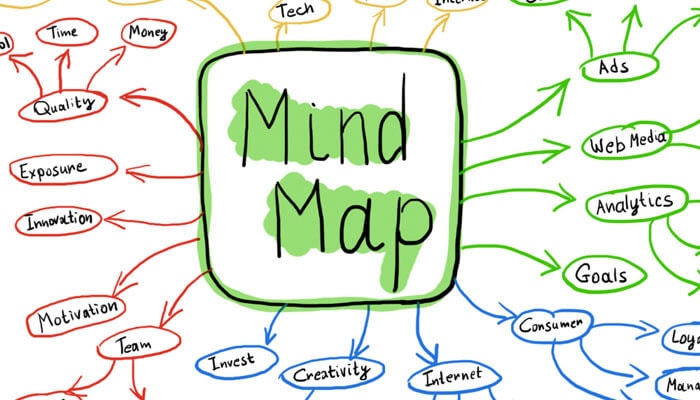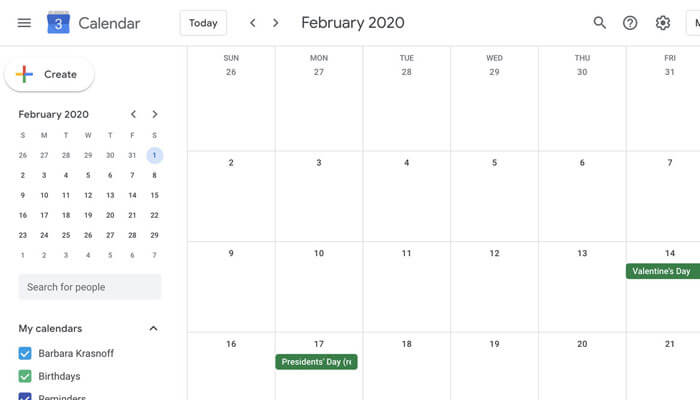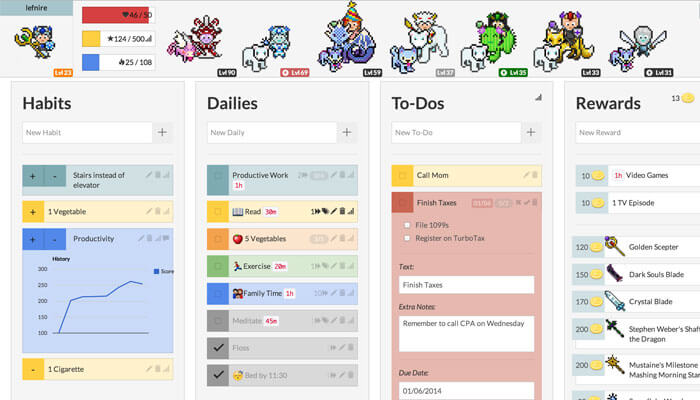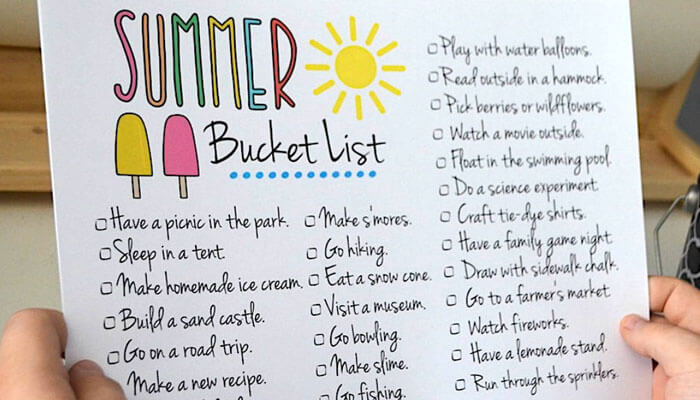In Parts 1 & 2 of our goal-setting series, we’ve discussed strategies for reflecting on the past year and for setting goals for the year ahead. However, another major part of goal-setting are the specific tools we use to stay motivated and track our progress along the way. When these tools are leveraged properly, they can be incredibly impactful for not only setting our goals but actually achieving them!
Think of the tools you use as the key ingredients in your goal-setting recipe; in addition to the goals themselves, which make up the bulk of your recipe, you need some extra ingredients to make the recipe work. You’ll probably have to play around with the ingredients until you’ve achieved a formula that works best for you as these tools are not “one-size-fits-all”. It may take some time to find the right approach that feels most authentic to you, your business and your team. From physical objects to thinking strategies to apps, you have plenty of options for customizing your goal-setting recipe.

1. Apps
There are tons of apps out there, and luckily, many of them are designed to help you with goal setting. Here are a few to try:
- Milestone Planner: Milestone Planner is a goal-setting platform that makes setting and tracking goals easier. Although this platform is targeted towards helping organizations of any size achieve their goals, they also provide a single user option at a lower rate. What’s unique about this app is it gives you an opportunity to brainstorm, visualize, and track your goals all in one.
- Lifetick: Lifetick is a worthwhile option if you’re looking for a more in-depth goal-setting tool. This app specifically helps you define your core values, and then offers a platform for you to set SMART goals and begin tracking them overtime.
- Habit List: An interesting perspective to goal-setting is that goals are really nothing more than a build-up of habits, which is exactly what Habit List helps you do. This app uses streaks, reminders, and badges to keep you motivated, and helps you view your success over time.
- StikK: Not only can this app be used for simple tracking and setting of your goals, but StikK has a unique way of adding some extra accountability for those who need it! StikK uses psychology to drive changes in your behavior by leveraging the power of putting money on the line.

2. Mind-mapping
Mind mapping is one of the best ways to capture your thoughts and bring them to life in visual form. Unlike note-taking or list-making which reflect linear thinking, mind maps can help you more realistically capture the thinking that goes on inside your head as it occurs. This technique can help you to be more creative, remember more, and solve problems and achieve goals more effectively. It might look a little messy, but it’s a great way to get all of your thoughts on paper and see how all of your goals are interconnected.
When using mind mapping for goal-setting, the central topic should be your ultimate goal, like we talked about in Part 2 of our goal-setting series. From here, we can break down our goals into high-level categories. As you move around and focus on each category, each subsequent goal should be more specific and action-oriented. For example, if your ultimate goal is to get a new job, then your sub-goals in the work related category might be updating your resume, networking, and performing online job searches. Once you’ve created your mind map, you’ll have a big picture, visual understanding of where your goals are concentrated, and what is required to make them a reality!

3. Google Calendar
If you’re a Google user, Google Calendar actually has basic goal tracking features built in. Although it’s not as robust as many other goal-setting apps out there, Google Calendar can be a great tool for finding time in a busy schedule to fit in a half hour here and there to exercise, practice an instrument, or relax. Google Calendar does the hard work of fitting your goal into your calendar, helping you turn that idle time into something more personally productive.
The caveat is it can only be used on the app version of Google Calendar for iOS and Android. Alternatively, you can manually set goals yourself weekly, monthly, and yearly in Google Calendar, plus set reminders along the way to keep yourself on track.

4. Gamification
Gamification is an application of the characteristics of game elements and principles in non-game contexts. Setting goals through gameful elements can help you to focus your attention and efforts towards achieving goals. The goal of a gamified system is to keep your motivation high and to be driven by your accomplishments, no matter how small. An important aspect of playing a game is overcoming a challenge or learning a new skill beyond your current abilities. Gamification can be especially helpful for fostering persistence by encouraging you to try and try again until you succeed. However, gamification is based on rewards that are extrinsic in nature, so if you’re someone who tends to be intrinsically motivated, this strategy might not be for you.
You can gamify your life by turning challenges or tasks into a game. All you need is a clear goal, some sort of point system, a reward to work towards, and a group of people who can join your game or help hold you accountable. There are also plenty of apps out there that can help you to gamify your life, depending on the types of goals you’re working towards. For example, Habitica is a free productivity app that has in-game rewards and punishments, plus a strong social network, to help you achieve goals of any kind. Whether you choose to use an app or create your own game, the key to success is finding a reward that you’re excited about and that motivates you to achieve your goals.

5. One year from now exercise
Think about what your best possible life might look like one year from now. What kind of job will you have? Are you saving money for something in particular? How will you feel mentally, physically and personally? It might help to write this out in a detailed letter to yourself. You can also go the route of focusing on a single “day in the life” — write down what your perfect day might look like in a year from now from the moment you wake up until you go to sleep.

6. Year Compass
As we mentioned in Part 1 of our Goal Setting series, Year Compass is a guided workbook that helps you reflect on the year and create a plan for the next one. The booklet was originally created by a group of friends back in 2012 — it went viral online, and is now a non-profit organization with hundreds of volunteers all over the world. The booklet was downloaded over 1.5 million times last year! The booklet provides open-ended questions to guide you on your goal setting journey, and this year’s copy has a pandemic supplement which focuses on confronting a loss of control, taking stock of your changed daily life, and assessing the health of your social circle. YearCompass is more about creating a “big picture” plan you can refer back to throughout the year to reconnect with your priorities, values, and long-term goals.

7. The Abundance Mentality
Coined by Steven Covey in the 1989 bestseller The Seven Habits of Highly Effective People, the “Abundance Mentality” helps you to see the potential to move beyond present circumstances and have hope for the future. If you’re someone who feels stuck in a pattern of setting goals only to abandon them, it might be helpful to reframe your way of thinking by cultivating an abundance mindset. Essentially, someone with an abundance mindset believes there is an abundance of everything in life (e.g. time, money, good relationships, resources, opportunities, etc.). This can empower you to be focused and driven, rather than feel constantly frustrated and overwhelmed. Specifically, an abundance mindset can help you to:
- Create meaningful life experiences.
- Pursue new, interesting opportunities.
- Live a full and satisfying life.
- Find happiness even amid struggle.
- Feel inspired and creative.

8. Daily affirmations
An affirmation is a simple but powerful statement that can help encourage and motivate ourselves. Positive affirmations can help to change the beliefs and negative thought patterns (which oftentimes take the driver’s seat!) that keep us from achieving our goals into positive ones. When we remind ourselves enough times about our values and all the good things we have going for ourselves, we begin to truly embody these things. What affirmations are not: telling yourself you’re going to be something, for example, financially abundant — this statement isn’t going to magically send money your way. Rather, it’s important to use this strategy in tandem with your SMART goals, especially setting your goals to be attainable, before working with positive goal setting affirmations. Find affirmations that truly resonate with you, and incorporate them into your daily routine!
Use affirmations daily by saying them out loud in front of a mirror, repeating them as a mantra during meditations, or writing them down in your journal. Here are a few examples of self-affirming, positive statements:
- I am doing great work, which will be recognized by my boss and colleagues.
- I am feeling relaxed and grateful to be where I am in life.
- I am confidently and honestly expressing myself in a way that is fulfilling to me.
- I have plenty of creativity for this project.
- I can do this!

9. Visualization
Visualization is a technique that you can use to create a powerful mental image of a future event, or in this context, the completion of a goal. When using visualization strategies, you are essentially practicing for the event inside your head. This can be particularly useful when used for goal setting, as you can visualize what success looks like to you and all of the hurdles you’ll conquer along the way. By preparing for success even in the worst case scenario, you can build the self-confidence needed to meet your goals, no matter how lofty they are. Part of what makes visualization so powerful is it’s only limited by your own imagination — you can take it in whichever direction feels right to you, and you definitely don’t need to be an expert to do it.
By adding a visualization practice to your daily routine, you will naturally become more motivated to reach your goals . You’ll start to notice you are unexpectedly doing things that move you closer to your ideal life. Suddenly, you find yourself volunteering to take on more responsibility at work, speaking out at staff meetings, asking more directly for what you want, and taking more risks in your personal and professional life – and experiencing bigger pay-offs. As cliche as it sounds, picturing yourself succeeding helps you truly believe in yourself!

10. Vision Boards
A vision board is a specific type of visualization tool, and it’s exactly what it sounds like: a board used to build a collage of words and pictures that represent your goals and dreams! By placing visual representations of your goals onto one space you’re being forced to define, clarify and envision your goals through and through. By putting a vision board somewhere you can see it every day, you will prompt yourself to visualize your ideal life on a regular basis. The best way to achieve your goals is to keep them top of mind, so you’re always looking for ways to move yourself closer to the people, resources and opportunities that will help you achieve them.

11. Journaling
Journaling is not just a little thing you do to pass the time or to write down memories you don’t want to forget. It can be used as a stress management and self-exploration tool, and although journaling works best when done consistently, even occasional, sporadic journaling can be stress relieving when the practice is focused on gratitude or emotional processing. On top of this, as we mentioned in Part 1 of our Goal Setting series, journaling can be a great tool for goal-planning and visualization. If you’re someone who’s more attracted to words than images, physically writing out what you want to achieve and how you’re going to achieve it on a regular basis can be helpful for shifting yourself into a growth mindset.

12. Post-it notes
A simple, quick, and inexpensive tool for short-term visualization and reflection: two Post-It notes. Visualizing your day beforehand and reflecting on your time after the fact can set you up for success. Geoffrey James of Inc. came up with the idea to combine the activities into a two-minute daily exercise that’ll easily help you get there.
Here’s his method:
Post-It #1: Start the Day Right
Your first Post-It note should be placed somewhere so that you see it first thing in the morning or when you get to work, like next to your bed, in your bathroom mirror, or at your desk. On this note, jot down an “I will” statement about how you want to perform that day. Think of this note as a quick dose of inspiration, setting your mission and getting you ready for the long day ahead. Focus on just a couple of goals or even one each day — these goals can be very small and simple, personal or professional; but should still be aligned with your values and long-term goals. Here are a few examples:
- Today I will strive to be kind to everyone.
- Today I will contribute meaningfully to discussions.
- Today I will listen fully to what other people have to say without interrupting.
- Today I will make sure at least one person knows how much I appreciate him or her.
Post-It #2: End the Day Right
On your second sticky note, give yourself some meaningful questions that will allow you to reflect on how your day went, and be sure to post it somewhere you’ll see it right before bed (like your sink or bed post). Did you accomplish the goals you set out to do?
Some great examples could include:
- Was I kind to everyone?
- Did I thoughtfully and meaningfully contribute to a discussion at work?
- Did I fully listen to what that person had to say?
- Did I tell at least one person who much I appreciated him or her? What did I say to that person?
These Post-Its may seem incredibly simple, but you’d be surprised how making this a ritual in the morning and at night can change your entire attitude as the days go by.

13. Dream big with bucket lists
The psychology behind a bucket list is pretty straight forward. It is considered a form of positive goal-setting which helps emphasize what’s most important for you to experience or achieve in your lifetime. Bucket lists are unique and incredibly personal to each individual. You can put anything at all on your list, and the list isn’t set in stone, so dream big! In order for your dreams to come true (no matter how crazy they may seem) you have to actually express them. From there, the goal will begin to seem more realistic, and you can begin to develop a strategy for reaching it.
Something to keep in mind
Every person (or organization) has unique values, vision and development needs, and a one-size-fits-all approach to goal-setting just isn’t going to cut it. Rather, having an individualized approach in which you feel your way through the process and find what feels most authentic to you will be the key to achieving your goals! So, take some time to experiment and figure out the goal-setting process and tools that work best for you.




